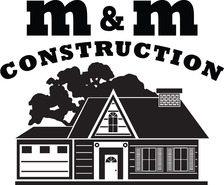
Get matched with top find a custom home builder pros in your area
Enter your zip and get matched with up to 3 pros
Matching on HomeAdvisor


Find a custom home builder pros in Lindale

M & M Construction is committed to excellence every aspect of our business. We uphold a standard of integrity bound by fairness, honesty and personal responsibility. Our distinction is the quality of service we bring to our customers. Accurate knowledge of our trade combined with ability is what makes us true professionals. Above all, we are watchful of our customers interests, and make their concerns the basis of our business.
""
Sandra J on December 2019
M & M Construction is committed to excellence every aspect of our business. We uphold a standard of integrity bound by fairness, honesty and personal responsibility. Our distinction is the quality of service we bring to our customers. Accurate knowledge of our trade combined with ability is what makes us true professionals. Above all, we are watchful of our customers interests, and make their concerns the basis of our business.
""
Sandra J on December 2019
Concho's Builders is committed to excellence in every aspect of our business. We uphold a standard of integrity bound by fairness, honesty and personal responsibility. Our distinction is the quality of service we bring to our customers. Accurate knowledge of our trade combined with ability is what makes us true professionals. Above all, we are watchful of our customer's interests, and make their concerns the basis of our business
Concho's Builders is committed to excellence in every aspect of our business. We uphold a standard of integrity bound by fairness, honesty and personal responsibility. Our distinction is the quality of service we bring to our customers. Accurate knowledge of our trade combined with ability is what makes us true professionals. Above all, we are watchful of our customer's interests, and make their concerns the basis of our business

I am no longer using this, please find us on our website link www.triple-ebuilders.com or facebook at www.facebook.com/tripleebuilders.com Thank you.
"."
Davis B on January 2020
I am no longer using this, please find us on our website link www.triple-ebuilders.com or facebook at www.facebook.com/tripleebuilders.com Thank you.
"."
Davis B on January 2020
Our mission at Carlyle Homes is to continue the growth of our business by doing right by all our clients. We love seeing that one of a kind smile on a home owners face at the end of a project! Carlyle Homes stacks up with the competition and surpasses it with competitive prices, second to none workmanship and a prompt and responsive team! We give you quality that you can measure, and a finished product that will enhance your home forever. Call us today!
"They finished up my house last year and the service was great very professional"
Tom X on June 2018
Our mission at Carlyle Homes is to continue the growth of our business by doing right by all our clients. We love seeing that one of a kind smile on a home owners face at the end of a project! Carlyle Homes stacks up with the competition and surpasses it with competitive prices, second to none workmanship and a prompt and responsive team! We give you quality that you can measure, and a finished product that will enhance your home forever. Call us today!
"They finished up my house last year and the service was great very professional"
Tom X on June 2018
Residential new home construction in the Tyler and East Texas area since 2006.
Residential new home construction in the Tyler and East Texas area since 2006.
We specialize in new home construction, remodels and all general construction needs.
We specialize in new home construction, remodels and all general construction needs.
General Contractor offering Full Custom Design for New Construction & Remodel, Garages, Patios, Outdoor Kitchens, Outdoor Fireplaces & Fire pits, Pergolas, Pool Houses, Cottages and Cabins and more..
General Contractor offering Full Custom Design for New Construction & Remodel, Garages, Patios, Outdoor Kitchens, Outdoor Fireplaces & Fire pits, Pergolas, Pool Houses, Cottages and Cabins and more..
Here at Precision Homes we strive to give the best possible service, we are a small company, we work hard to keep the customer satisfied. We are members of the BBB with an A rating.
"I can’t wait to enjoy our new addition. Rick Denton with Precision Homes and his crew is the best! People on our street commended the strong nice looking staircase. Outstanding work ethics: Punctual, responsible, respectful, knowledgeable and considerate. Highly recommend!"
Eugenia & Julio D on October 2022
Here at Precision Homes we strive to give the best possible service, we are a small company, we work hard to keep the customer satisfied. We are members of the BBB with an A rating.
"I can’t wait to enjoy our new addition. Rick Denton with Precision Homes and his crew is the best! People on our street commended the strong nice looking staircase. Outstanding work ethics: Punctual, responsible, respectful, knowledgeable and considerate. Highly recommend!"
Eugenia & Julio D on October 2022
WE ARE OFFERING A SPRING SPECIAL THIS MONTH AN ADDITIONAL 15% OFF Family owned & operated. We have been installing plantation shutters to high-end builders for 35 years in North Texas. We sell direct to home owners and builders, there is no middle man to pay. We do not sub-out installation, and can have your shutters within 3 or 4 weeks. Our shutters come with a Lifetime Guarantee. All our Shutters are Painted to match your trim color. We offer 2,3,4 and 5" Blades at no extra charge. A single panel shutter can be 50" Wide and 120" Tall, all made of the finest quality hardwood. Jim is your only point of contact. He sees the job through from beginning to end. You will not be disappointed. Award winning.
"went weeks ignoring calls, not returning calls, only became communicative when we threatened to hire someone else to finish."
Ronald S on September 2021
WE ARE OFFERING A SPRING SPECIAL THIS MONTH AN ADDITIONAL 15% OFF Family owned & operated. We have been installing plantation shutters to high-end builders for 35 years in North Texas. We sell direct to home owners and builders, there is no middle man to pay. We do not sub-out installation, and can have your shutters within 3 or 4 weeks. Our shutters come with a Lifetime Guarantee. All our Shutters are Painted to match your trim color. We offer 2,3,4 and 5" Blades at no extra charge. A single panel shutter can be 50" Wide and 120" Tall, all made of the finest quality hardwood. Jim is your only point of contact. He sees the job through from beginning to end. You will not be disappointed. Award winning.
"went weeks ignoring calls, not returning calls, only became communicative when we threatened to hire someone else to finish."
Ronald S on September 2021
Find a custom home builders FAQs
A construction loan is one of the most common financing options available for building a home. You’ll typically need a high credit score and make a down payment when you apply for the loan. Other alternatives include federal construction loans for active and retired service members, hard money loans, and construction loans backed by the Federal Housing Administration.
Building your house typically takes about seven months from start to finish. According to U.S. Census Bureau data, this timeline is achievable when all tasks are managed efficiently. With effective planning, optimal labor allocation, and proactive resource management, you can complete the construction phases on schedule while minimizing delays and unforeseen setbacks.
To save on home-building costs, consider choosing a smaller design or alternative construction methods. You can lower expenses dramatically by using prefabricated house kits, repurposing shipping containers, or adopting tiny house designs that require as little as $8,000 in material costs. These strategies reduce labor expenses and material waste while delivering a high-quality, efficient home.




- Birmingham
- Phoenix
- Tucson
- Fresno
- Long Beach
- Los Angeles
- Modesto
- Sacramento
- San Diego
- San Francisco
- San Jose
- Denver
- Hartford
- Washington DC
- Fort Lauderdale
- Jacksonville
- Miami
- Orlando
- Tampa
- Atlanta
- Chicago
- Indianapolis
- Louisville
- New Orleans
- Baltimore
- Boston
- Detroit
- Grand Rapids
- Minneapolis
- Saint Paul
- Kansas City
- Saint Louis
- Las Vegas
- Albany
- New York
- Asheville
- Charlotte
- Greensboro
- Raleigh
- Winston Salem
- Cincinnati
- Cleveland
- Columbus
- Oklahoma City
- Portland
- Harrisburg
- Philadelphia
- Pittsburgh
- Providence
- Memphis
- Nashville
- Austin
- Dallas
- El Paso
- Fort Worth
- Houston
- San Antonio
- Salt Lake City
- Norfolk
- Richmond
- Virginia Beach
- Seattle
- Madison
- Milwaukee




